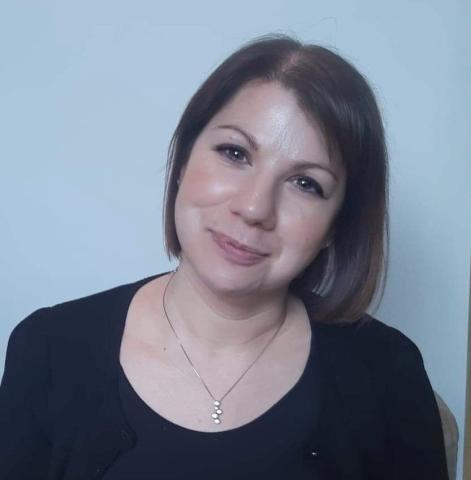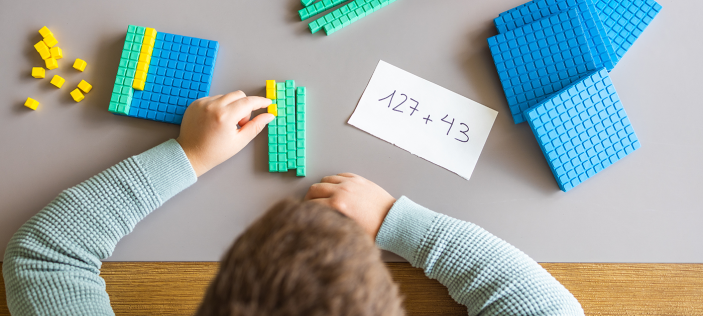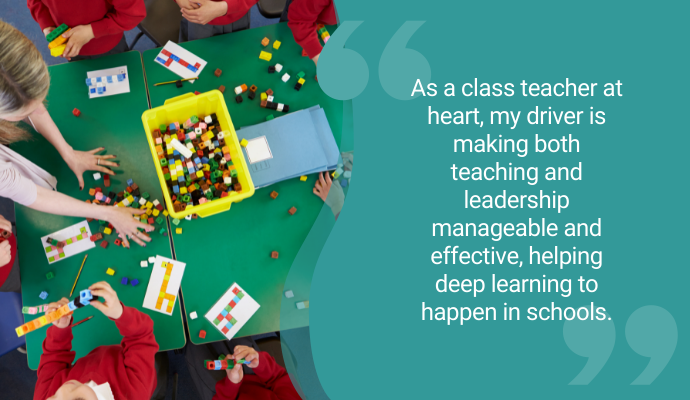
This blog has been lurking, unwritten, at the back of my mind for a while.
The danger with writing about ‘back to basics’ is that it becomes patronising, and this is not my aim. As teachers, we are a highly skilled and dedicated profession; my aim is certainly not to tell anyone what they already know.
The aim is to confirm, support and reflect on what we believe and know has impact on learning in the classroom. So that as you read, you nod along to yourself, safe in the knowledge that you already balance these suggestions appropriately, for the learning happening in your classroom or school. Like when you listen to a great speaker at an event, and they resonate with you in a way that both affirms your beliefs and strengthens your sense of purpose.
My focus is primary mathematics.
The role I play involves working with a range of schools, supporting subject leaders and teachers, modelling teaching, helping with planning, supporting learning walks, and leading staff meetings, among many other things. As a class teacher at heart, my driver is making both teaching and leadership manageable and effective, helping deep learning to happen in schools.
After the first partial school closures in the spring/summer of 2020, what struck me was the incredible way teachers and schools so quickly adapted; to manage risk, to allow teaching and learning to happen, to create safe environments. Some choices felt like necessary measures to reduce the risk of transmission, such as children in rows where they might normally sit around tables in groups. Or giving children their own sets of stationary equipment to avoid the need to share. We were all anxious: we were worried about the risks, the impact on learning and the impact on children’s well-being.
However you feel about where we are now, 2 years on, there is definitely a feeling that things are gradually relaxing where possible and appropriate. You might be more likely to see children sat in groups again or sharing glue sticks. There might be a shared pot of pens and pencils rather than individual equipment packs. Some children in the youngest year groups may have now had their first experience of assemblies in the hall. We are finding ways to bring back our routines and systems (and holding onto some of the ones we like and have worked well for us more recently).
There has been a huge impact on children’s collective learning and well-being from the disruption of the last 2 years. We notice children have many gaps. Some of these are more social skills and self-regulation based; some more academic learning gaps.
We know we need to scaffold and track back, re-teach or pre-teach, to find and close those gaps.
So, how can we ensure our teaching is as effective as possible, particularly within this current scenario? How do we teach in a way that promotes learning opportunities, filling gaps but also aiming forwards?
Here are my thoughts, with a focus on primary maths and on the gaps within curriculum learning, but with many overlaps both across subjects and key stages.
- identify the key learning. Where does this fit within the journey of the curriculum?
- take a step back. What might need pre-teaching or reactivating, before children are ready to build towards the pitch you are aiming for?
- consider your first example, model or question; make it accessible to all and then build on it.
- model everything; the process, thinking, visuals and talk.
- engage everyone; through the way you ask questions and call on responses.
- allow sufficient practice and rehearsal time.
- continually assess for learning. Does it look, feel, and sound like everyone is with you?
These thoughts in more detail:
- identify the key learning. What is it you are trying to teach and what do you want the children to learn (to know or be able to do)? Where does this fit within the journey of the curriculum - what should have come before this and where is it going next?
-
take a step back. What might need pre-teaching or reactivating, before children are ready to build towards the pitch you are aiming for? Before launching into the learning, anticipate whether children will have the steps in place that should have come before this learning. There may be key points to re-cap or vocabulary to rehearse.
We can sometimes be guilty of simply following our long-term plan. Whatever our long-term plan suggests, I would still ask myself; Why this? Why now? Pausing to consider what this learning builds from and builds onto. The ‘building from’ will also tell me what I need to pre-teach or reactivate, knowing that there may be gaps, insecure learning, or misconceptions.
For example, in Year 5, I might be due to teach ‘reading timetables’ and ‘calculating with time’. Before I start, I will most likely need to check that children are secure with reading digital clocks in both 12 and 24-hour time. The learning about conversion between analogue and digital usually happens within Year 4. Reading time to the nearest minute on an analogue clock usually happens within Year 3. So, for the Year 5 learning to be successful, I need to check on this pathway, filling gaps as we go, to build solid foundations for the new learning. If I consider these aspects 2-3 weeks before the main input comes up, I could plot some of the pre-teaching and reactivation work into short maths fluency sessions, starters, or classroom routines, so that children rehearse reading an analogue clock, looking at digital 12 and 24-hour time and using the language of time (60 minutes in an hour, 24 hours in a day), before we embark on ‘reading timetables’ and ‘calculating with time’. Or I can plan in time for this at the start of the sequence of learning.
Here is a set of matching cards to explore analogue and digital, am/pm, 12 and 24-hour time. This is from our ESSENTIALmaths planning and resources for Year 5. It’s from the first part of the sequence that focuses on reading timetables and calculating with time:
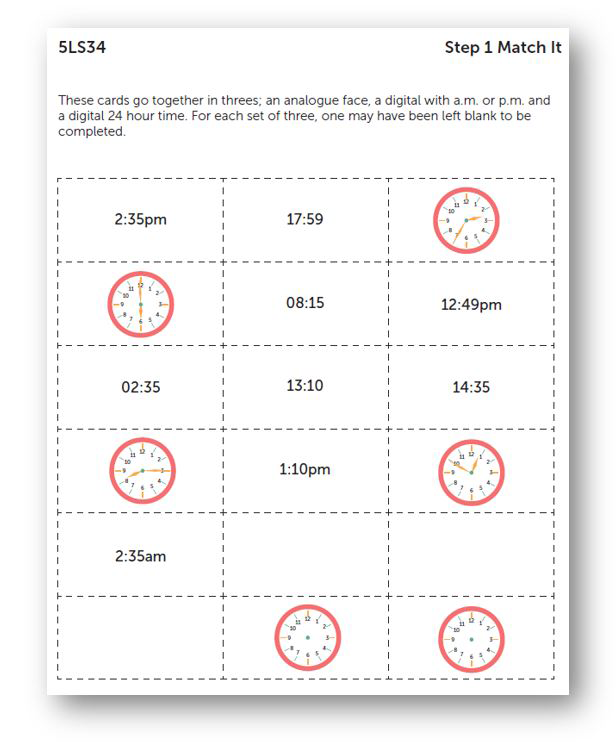
-
consider your first example, model or question; make it accessible to all and then build on it. Where do you need to start so that everyone understands and can follow what you are modelling?
Using the same example as previous, ‘reading timetables’ and ‘calculating with time’, I need to select the right first example; something with a manageable amount of information. Is my focus reading timetable? How can I help the children focus on the reading and interpreting of the information?
Again, this example comes from our ESSENTIALmaths planning and resources for Year 5.
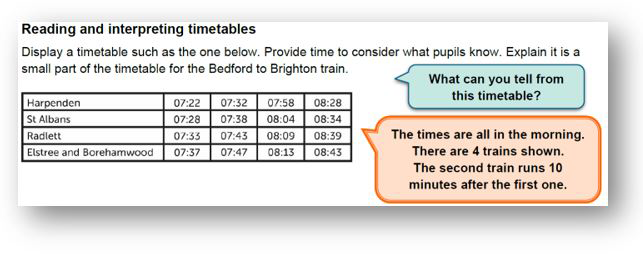
-
model everything; the process, thinking, visuals and talk. Say and show what you are doing, how and why. Write it and draw it for pupils to see. Enable the children to ‘play along’ with the modelling. Mix modelling with questioning when the children are ready.
This could be as simple as being really explicit about which part of the example you are explaining, pointing to and drawing everyone’s attention to the part you are thinking about. In maths, we talk about using the CPA approach (concrete, pictorial, abstract); ensuring that the physical manipulatives, pictures/diagrams and the abstract representations work together to build a deeper understanding.
-
engage everyone; through the way you ask questions and call on responses (talk partners, rough books, white boards, shared counting, choral responses and many other ways).
For me, this one is a must. Even if the previous four points are in place, if children are just watching you, occasionally putting their hand up, they may not be truly engaged, and the understanding might not be as deep as you think. A way to allow children to process the learning and for you to assess their understanding is to use strategies such as small whiteboards and/or talk partners regularly. My personal preference is to use both. I want all children fully engaged and participating in the learning.
-
allow sufficient practice and rehearsal time. This enables children to process, develop fluency and confidence, develop understanding, and build memory. We know that when we say a child lacks confidence, we often mean they didn’t have long enough to practice and secure the learning. So, giving rehearsal time is often key for the confidence, fluency, and retention of learning.
-
continually assess for learning. Does it look, feel, and sound like everyone is with you?
This might be during the input and can be easily done when scanning children’s whiteboards or asking questions. This might be when you are reviewing pupils’ work. The follow up to this would be:
-
what happens for the children who seem less secure?
-
what systems are in place?
-
Whether you are reading this as a class teacher or a subject leader (or from another school leadership role), you are probably already reflecting on whether this happens within your own classroom or school, the extent to which it happens and whether it is having the impact you want. Are learning gaps being filled gradually?
We started by saying that although this has a ‘back to basics’ heading, the aim is not to just tell you what you know, but to confirm the good practice already happening in classrooms, affirming what we do well but with a focus on ensuring that our efforts are put into the areas most likely to ensure learning happens.
The 7 points above may help to neatly summarise what we hope is happening in all primary maths classrooms, to allow all children to fully access the learning, after what has undoubtedly been a very disrupted time for them in education.
If you’re looking for support with primary maths teaching or subject leadership through in-school or remote consultancy, staff meeting or INSET sessions, please get in touch for further details.
